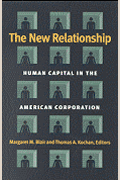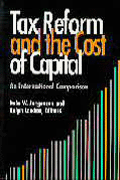Studies in this week’s Hutchins Roundup find that education only explains a small part of the variation in intergenerational income mobility, investor risk appetite drives the real interest rate, and more.
Want to receive the Hutchins Roundup as an email? Sign up here to get it in your inbox every Thursday.
Education explains only a small part of the variation in intergenerational income mobility across geographic areas
Raj Chetty and co-authors have shown that intergenerational income mobility varies greatly across geographic areas. Jesse Rothstein of the University of California, Berkley explores whether differences in children’s education can explain this variation. He finds that the gap in educational achievement between low- and high-income students, measured by test scores and post-secondary education, is smaller in some commuting zones than in others. In addition, the importance of education for future earnings varies across commuting zones. But educational differences across areas can explain less than one quarter of the variation in intergenerational mobility, suggesting that other factors, like differences in social networks, are likely at play, Rothstein argues.
Investor risk appetite drives the real interest rate
Using data on U.S. equities, Carolin Pflueger of the University of British Columbia and co-authors construct a new measure of investor risk appetite equal to the difference between the average book-to-market ratios of high-volatility stocks and low-volatility stocks. This is a useful proxy of risk appetite since investors will prefer low-volatility stocks when risk appetite is low, and high-volatility stocks when risk appetite is high, they argue. The authors find that their measure is strongly correlated with the one-year real interest rate, explaining 41 percent of its quarterly variation from 1970 to 2016. In addition, they show that an increase in risk appetite is followed by higher private investment and output and lower unemployment over the next year, suggesting that risk appetite plays an important role in business cycle fluctuations.
Has the long-run real interest rate declined?
Since the global financial crisis of 2008, real interest rates have been historically low, prompting some to argue that the long-run level of the real interest rate has fallen. By incorporating a lower bound on U.S. short-term interest rates into a model of the macroeconomy, Benjamin K. Johannsen of the Federal Reserve Board and Elmar Mertens of the Bank for International Settlements find that long-run interest rates have not fallen by as much as others believe. In their model, most of the recent decline in interest rates is temporary, and the decline in the trend real rate since the 1990s is small and insignificant.
Chart of the week: Emerging economies account for recent rise in global debt

Quote of the week:
“Some observers contend that current capital requirements are too onerous and are choking off credit. But the evidence suggests otherwise: U.S. bank lending has been healthy over recent years and profits are strong. By any measure, U.S. banks appear very competitive relative to their international peers. In that regard, the current level of capital is a sign of strength. While there is a natural tendency to question the value of capital buffers when times are good, the severe costs associated with not having enough capital to absorb losses become all too evident in a downturn. By the time losses are rising, it is generally too late to start building buffers, which became all too clear with devastating consequences in some countries during the last crisis,” says Lael Brainard, governor of the Federal Reserve.
“I support efforts to identify improvements that make regulations less burdensome. But it is vital to be prudent regarding any material changes to the core capital and liquidity framework, and not lose sight of the need to safeguard financial resilience through the cycle. Prudence would argue for waiting until we have tested how the new framework performs through a full cycle before we make judgments about its performance. At this point in the cycle, it is premature to revisit the calibration of core capital and liquidity requirements for the large banking institutions.”
The Brookings Institution is committed to quality, independence, and impact.
We are supported by a diverse array of funders. In line with our values and policies, each Brookings publication represents the sole views of its author(s).










Commentary
Hutchins Roundup: Intergenerational income mobility, investor risk appetite, and more
April 26, 2018